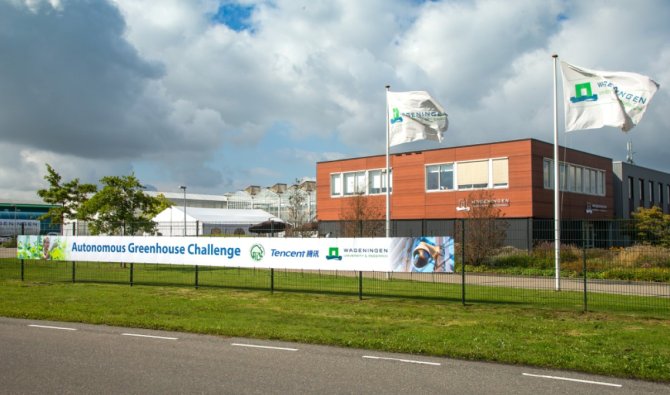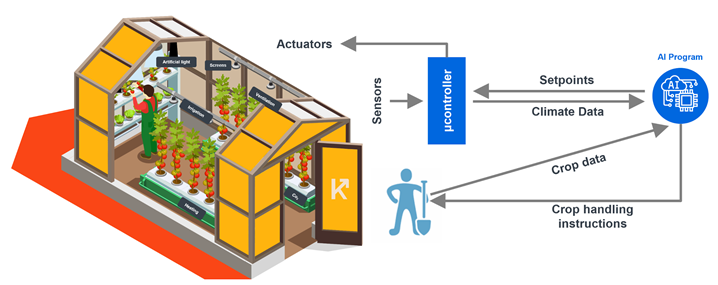Introduction
In the ever-evolving landscape of agriculture, technology continues to play a pivotal role in enhancing efficiency and sustainability. One such initiative that exemplifies the synergy between agriculture and cutting-edge technology is the Autonomous Greenhouse Challenge (AGIC). In this blog post, we will delve into the AGIC and its mission to revolutionize greenhouse farming by harnessing the power of artificial intelligence, data analytics, and automation. Additionally, we’ll explore the remarkable progress made by the Everglow Innovators in the field of blueberry research, with a particular focus on their innovative plant growth models.
The Autonomous Greenhouse Challenge (AGIC)

Organized by Wageningen University & Research (WUR), AGIC is a global competition that brings together multidisciplinary teams of computer scientists and horticultural experts. Their shared goal? To push the boundaries of agricultural productivity through the application of AI and machine learning, ultimately reducing resource consumption and ensuring a steady supply of nutritious vegetables to meet the needs of a growing world population.
AGIC is a testament to the belief that AI has the potential to redefine horticultural practices, making them more sustainable and efficient. The competition sets the stage for innovation, inviting teams from around the world to participate in various stages, from hackathons to the final event.
Team Profile: Everglow Innovators
Among the standout teams in AGIC, Everglow Innovators is poised to make a significant impact. Comprising experts from diverse backgrounds, including computer science, agriculture, and data analytics, the team’s mission is to propel the agricultural industry into the future. With a shared vision and a passion for the intersection of agriculture and technology, they are well on their way to making a mark.
Harnessing Technology for Greenhouse Farming
AGIC challenges teams to remotely cultivate a variety of crops, such as cherry tomatoes, within a controlled environment. To facilitate this, WUR provides greenhouse space and equipment, with generous support from sponsors like Lanbao, a leading provider of substrate solutions.
One key technology element in this challenge is the use of advanced substrate solutions, such as coconut coir, to provide an ideal growing medium for the crops. This not only ensures uniform growth but also allows for precise control of water content and electrical conductivity in the root zone, ultimately leading to healthier plants and higher yields. In Everglow Innovators’ case, the support of Lanbao’s expertise has been invaluable in their journey.
Data-Driven Agriculture

In the heart of AGIC lies the importance of data. Teams like Everglow Innovators are continuously collecting and analyzing data from various sensors, including those measuring greenhouse climate, plant profiles, and even leaf temperature. This trove of data is then processed and used to optimize inputs, irrigation strategies, and plant profiles. It’s not just about collecting data; it’s about harnessing meaningful data that drives agricultural decisions.
Everglow Innovators: Pioneers in Blueberry Research

Everglow Innovators has made significant strides in the field of blueberry research. Blueberries are known for their sensitivity to environmental conditions, making them an ideal subject for data-driven research. Everglow Innovators has developed pioneering plant growth models based on blueberry crop biology, enabling precise control of growth parameters. This innovation not only has the potential to revolutionize blueberry cultivation but also serves as a testament to the intersection of agriculture and technology.
Challenges and Future Prospects
Participating in AGIC is not without its challenges. The time frame for developing AI models and algorithms is limited, and teams are continuously fine-tuning their systems. Additionally, team members often juggle their AGIC commitments with their primary jobs and geographic distances, making coordination a significant challenge.
Despite these hurdles, Everglow Innovators remains committed to their mission. Their dedication to finding innovative ways to apply data management and analysis techniques to enhance efficiency and sustainability in agriculture keeps them motivated. Their experiences in AGIC are not just a competition but a stepping stone toward the broader goal of advancing autonomous greenhouse systems and revolutionizing blueberry cultivation.
Conclusion
The Autonomous Greenhouse Challenge is a remarkable testament to the potential of technology to shape the future of agriculture. Teams like Everglow Innovators are at the forefront of this revolution, leveraging data, AI, and substrate solutions to drive sustainable and efficient farming practices. As the challenge progresses, it becomes increasingly evident that the fusion of agriculture and technology holds the key to addressing global food security and resource management challenges. AGIC paves the way for a greener, more sustainable future, one harvest at a time, while Everglow Innovators continue to innovate and make breakthroughs in blueberry research.

